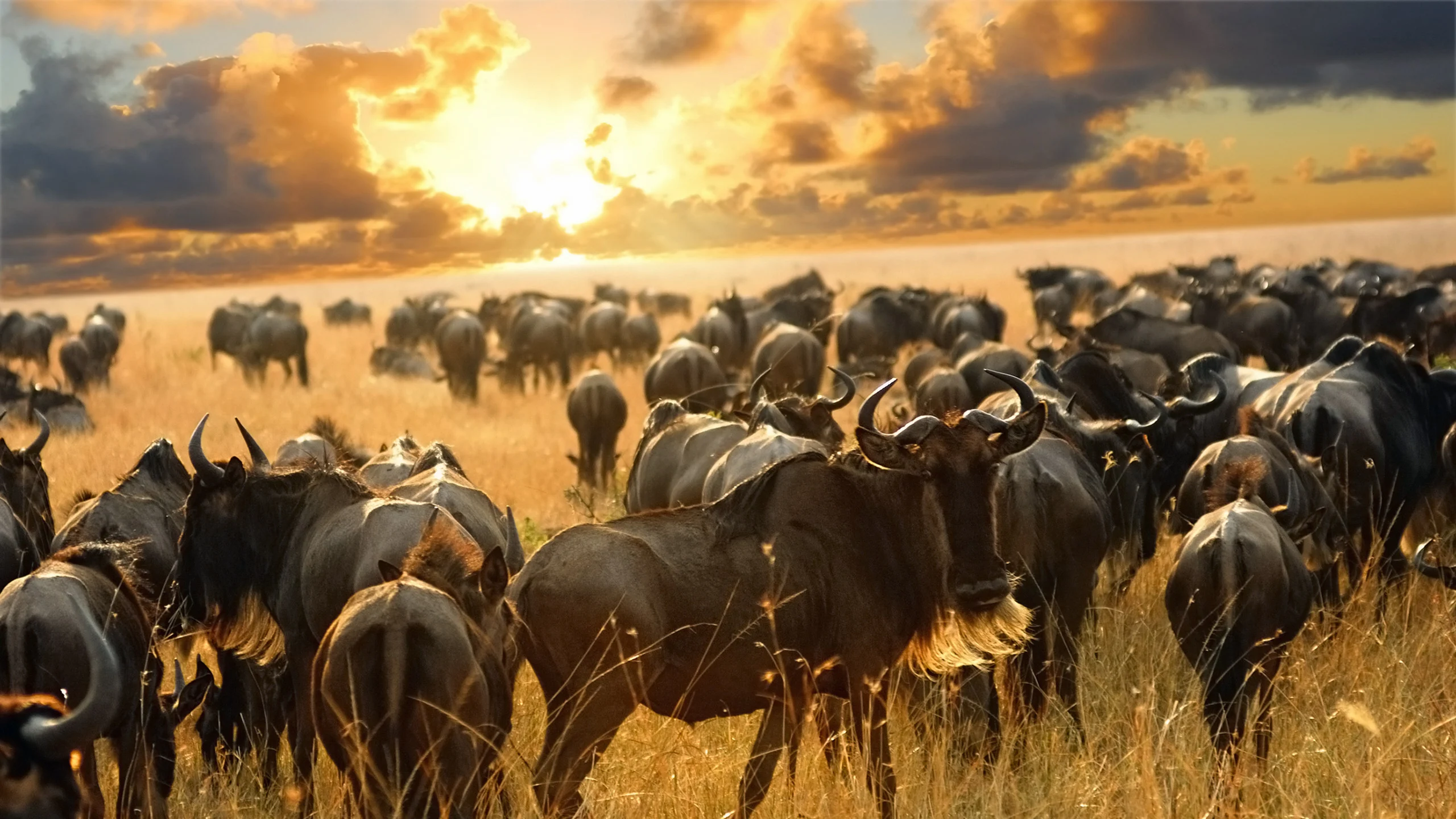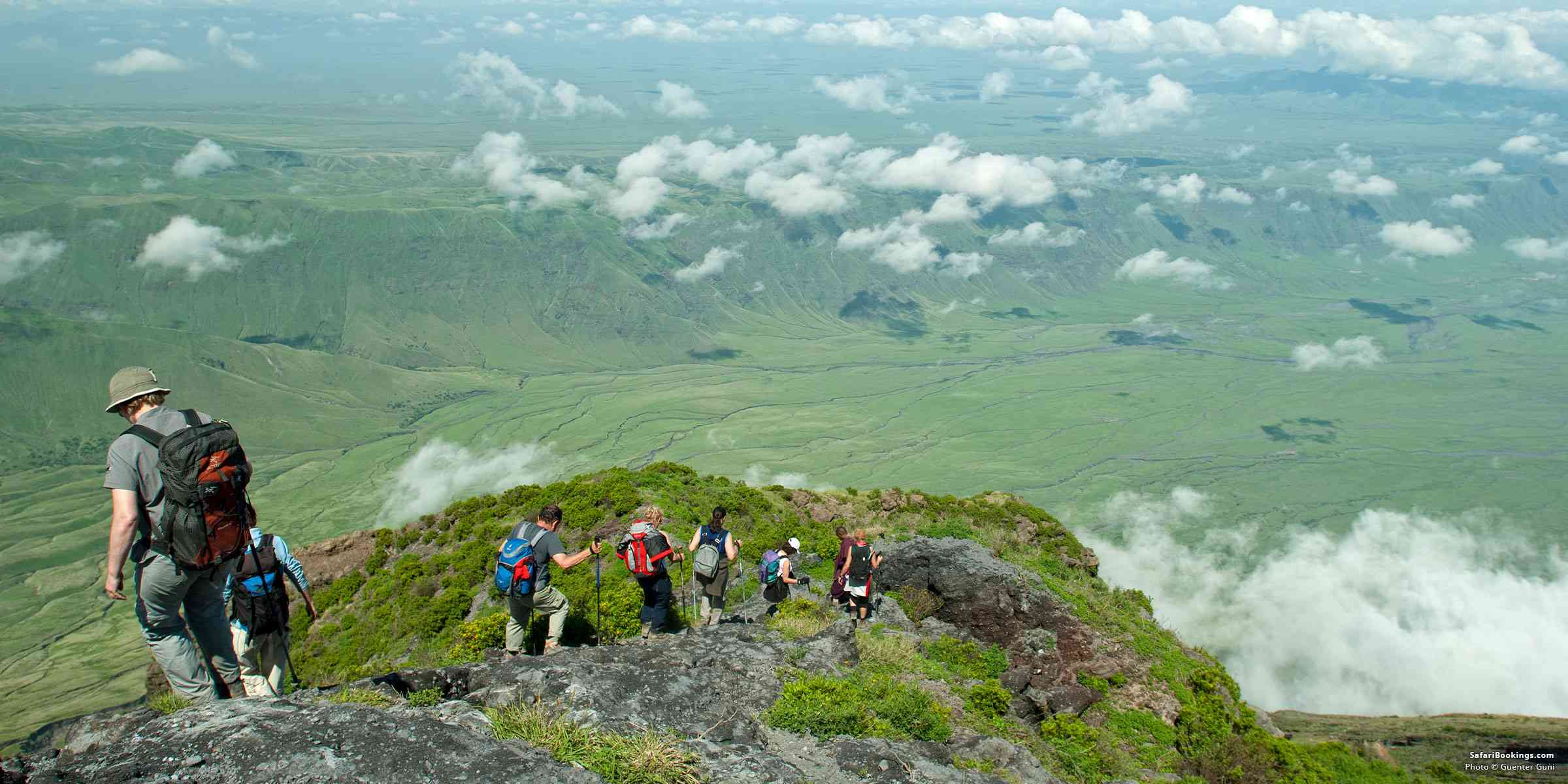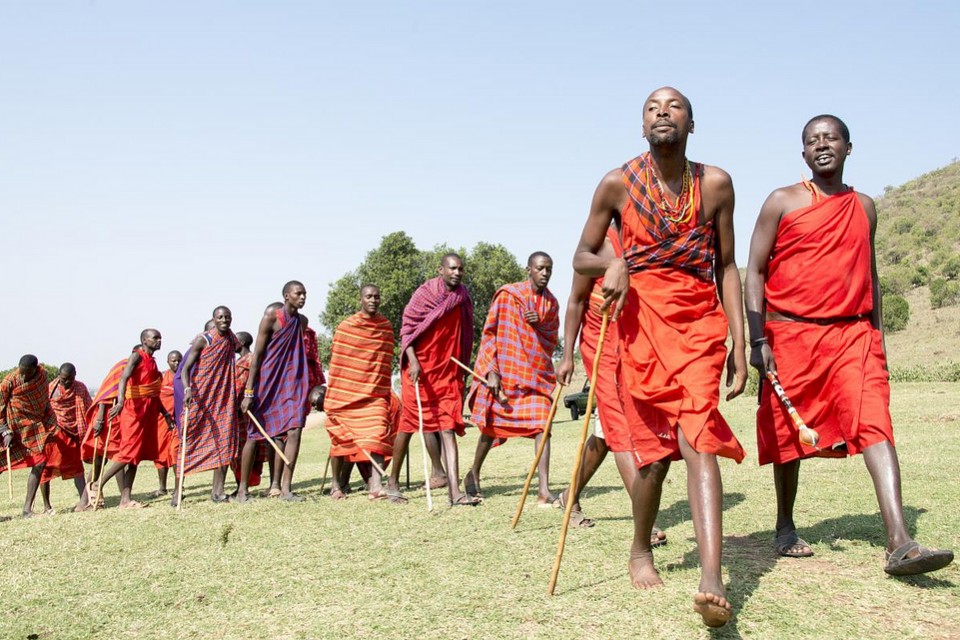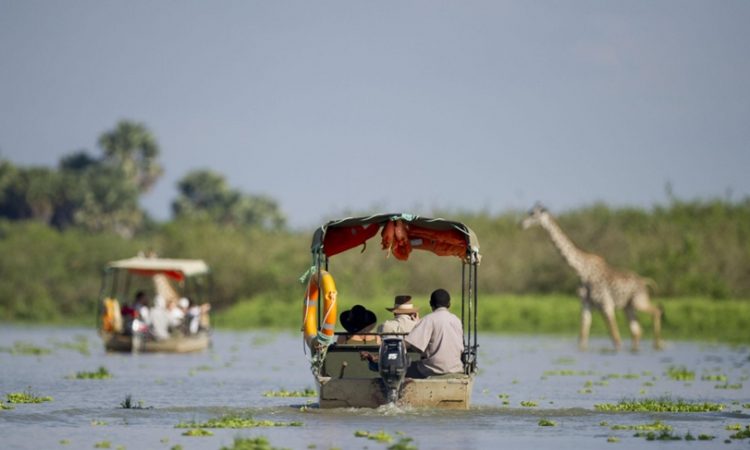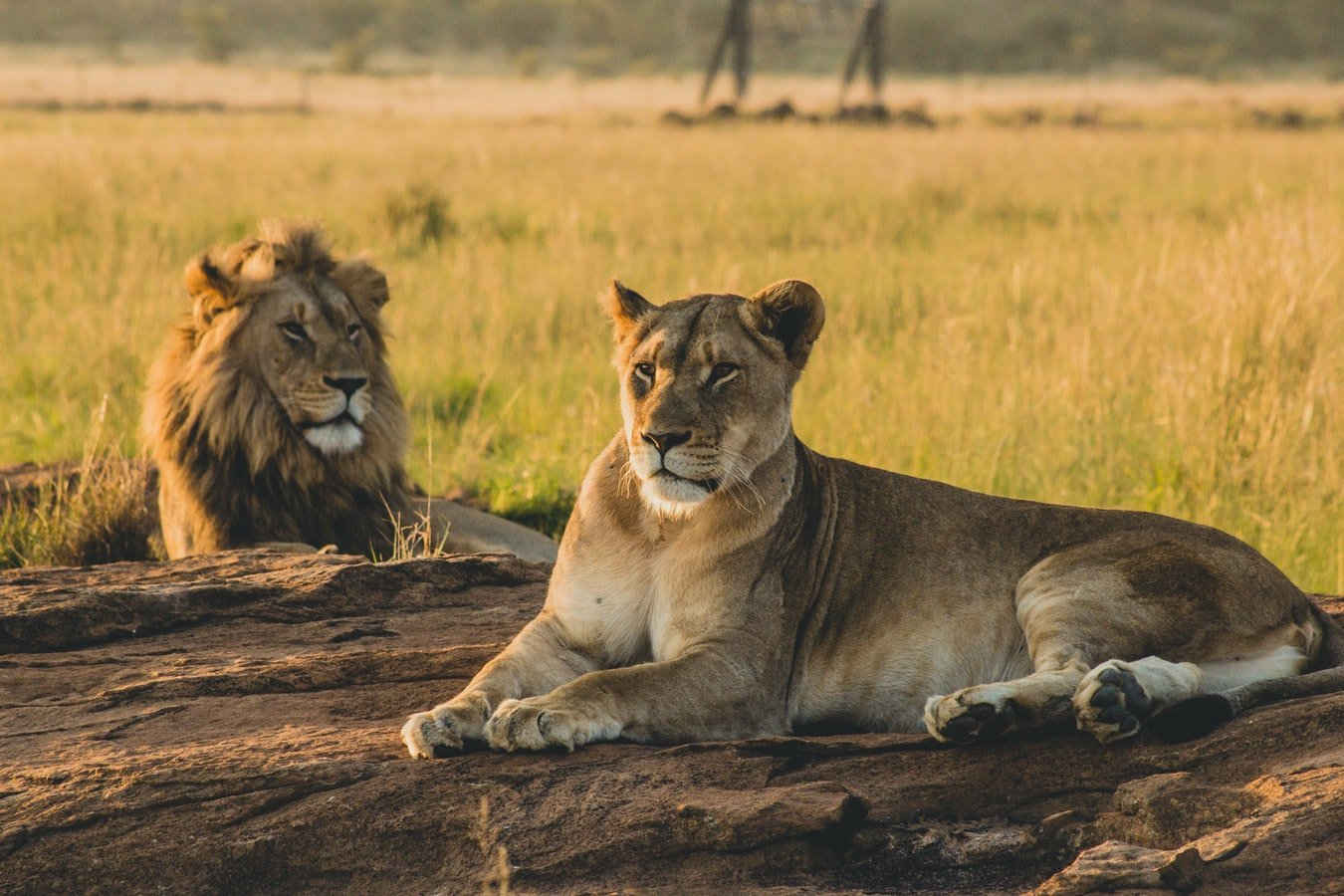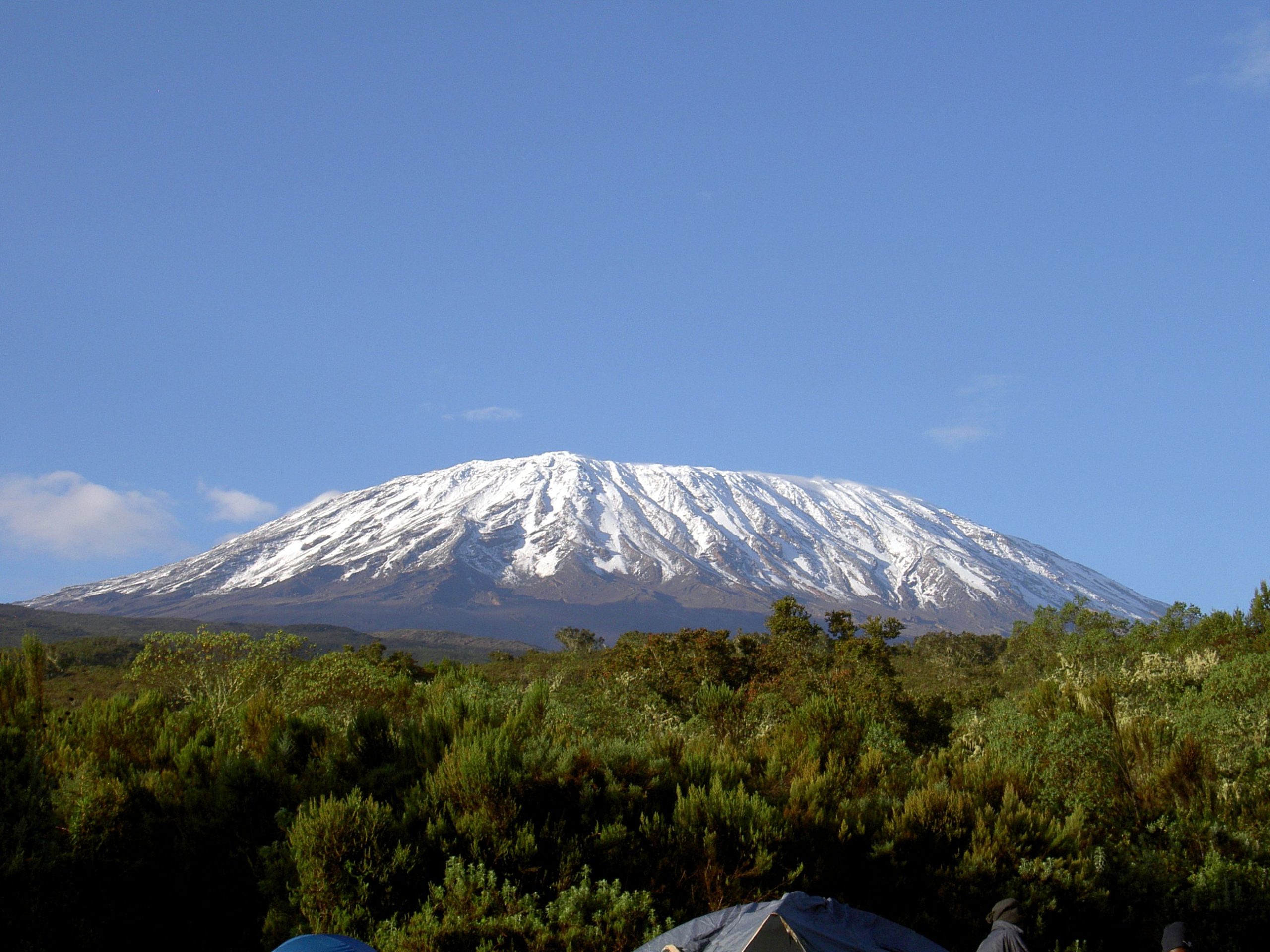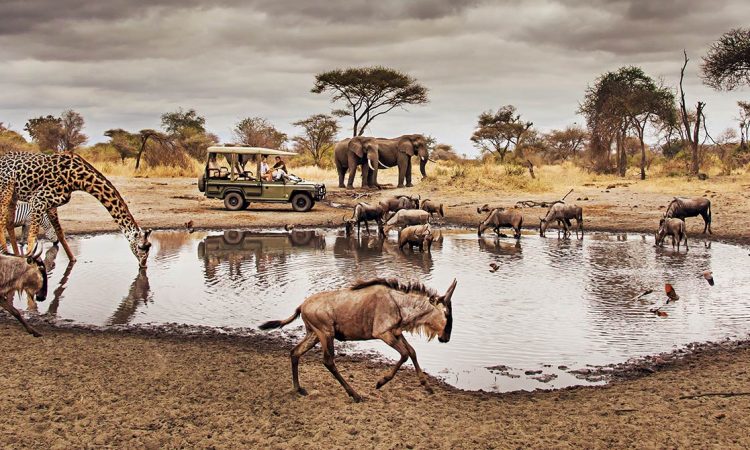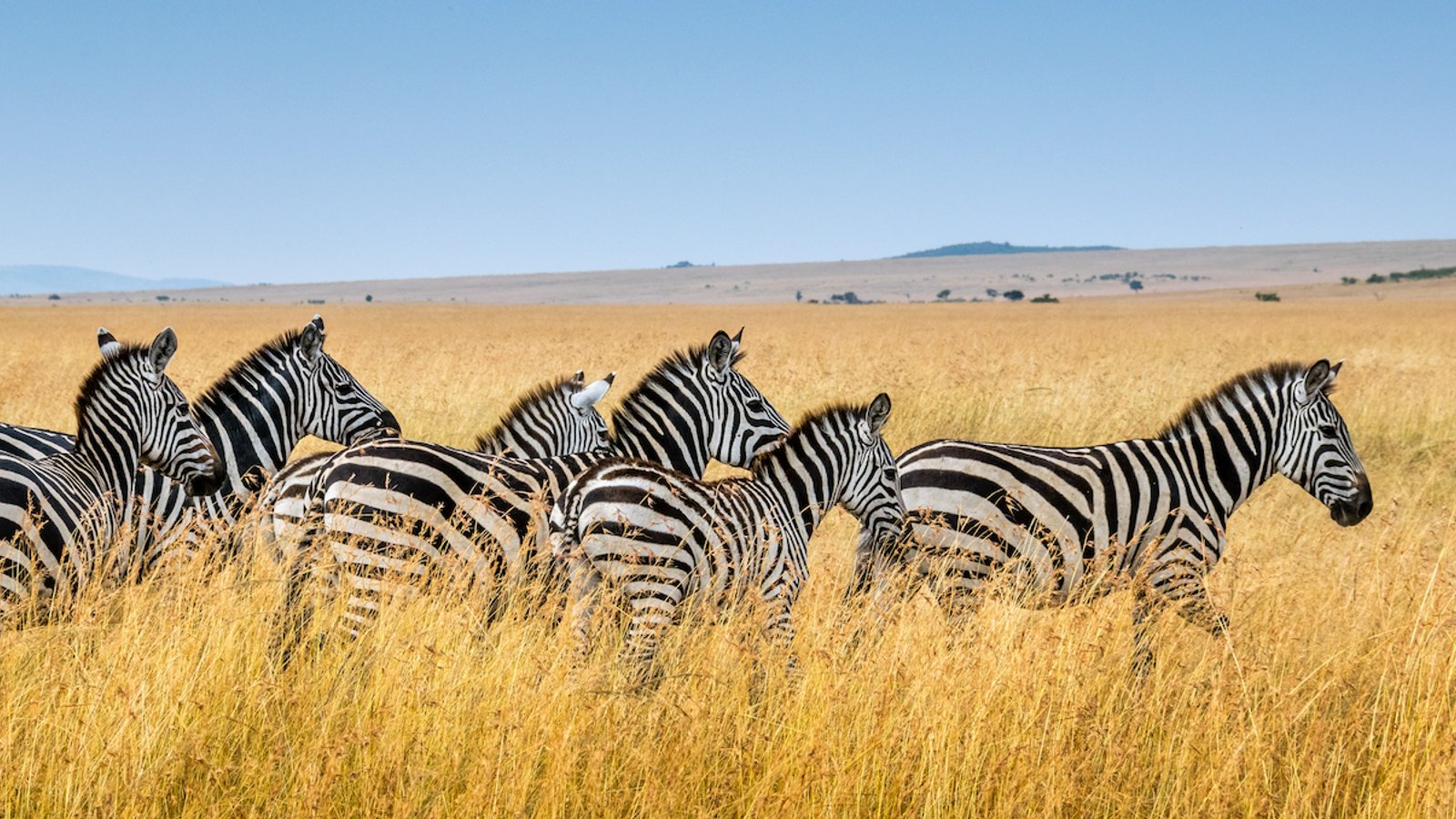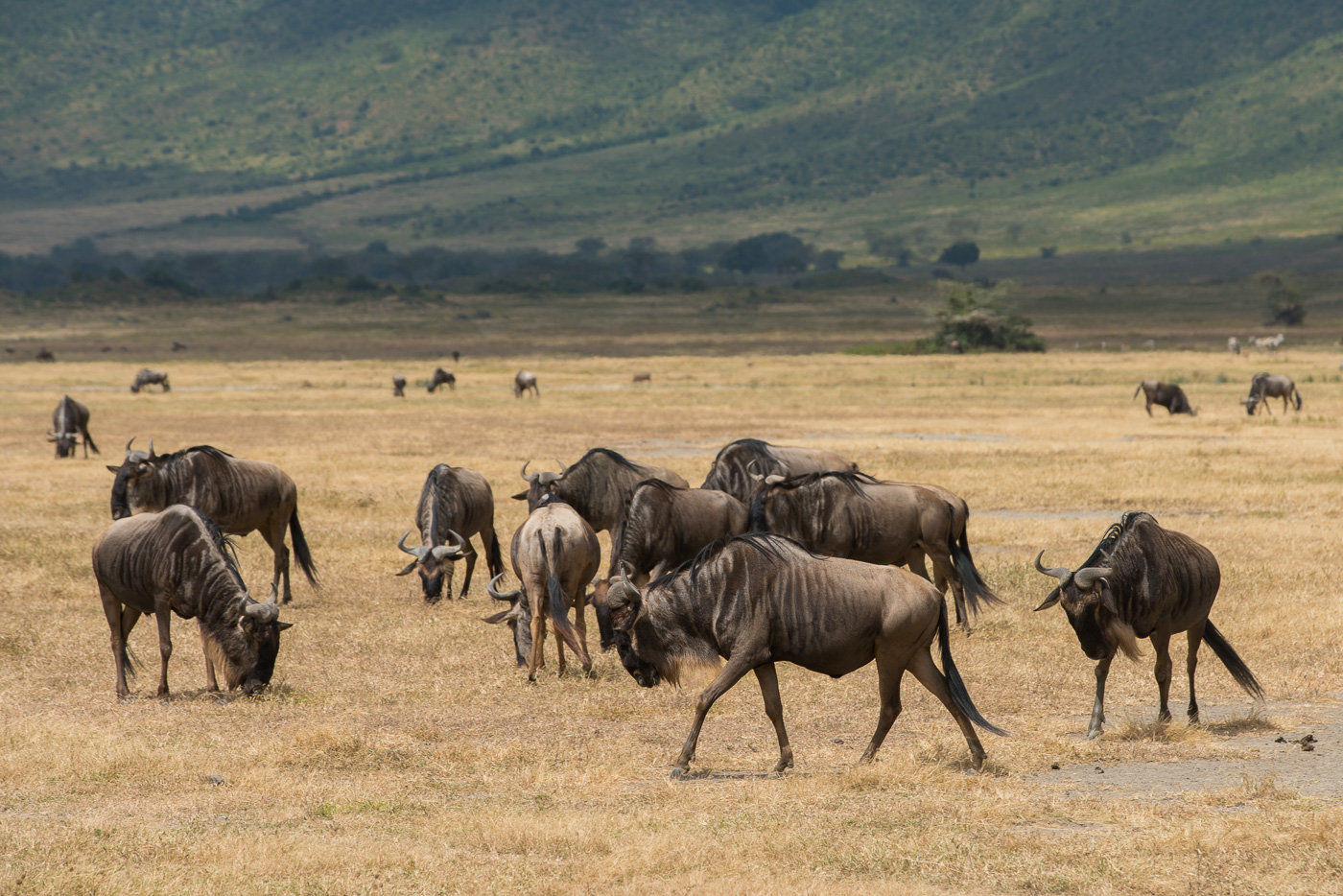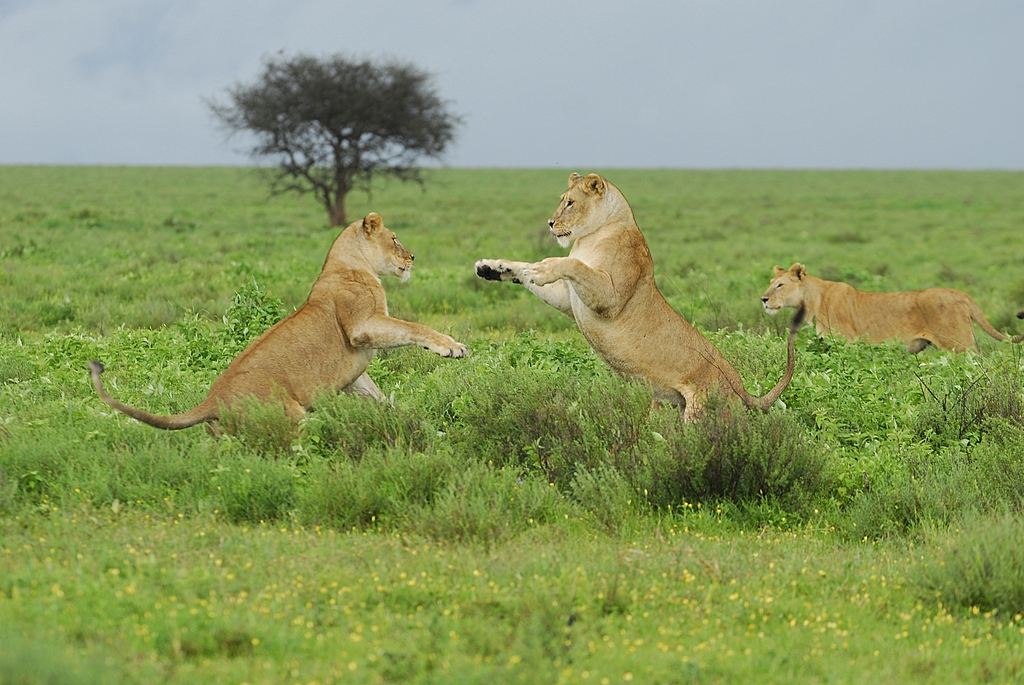Prepare to witness one of the world’s most spectacular wildlife phenomena, where nature’s timeless rhythm unfolds on the vast plains of East Africa. Embark on a mesmerizing journey as millions of wildebeests, zebras, and other ungulates traverse the Serengeti-Mara ecosystem, braving perilous river crossings and untamed landscapes. Here, we invite you to become a part of this remarkable natural spectacle and create cherished memories that will stay with you forever.
What is the Great Wildebeest Migration? The Great Wildebeest Migration is an extraordinary annual journey undertaken by over two million wildebeests, accompanied by hundreds of thousands of zebras and gazelles, as they traverse vast distances in search of fresh grazing and water. This iconic migration is often hailed as one of the Seven Natural Wonders of the World and is a testament to the enduring cycle of life and death in the wilderness.
The Movement Throughout the Year: The migration follows a circular pattern throughout the Serengeti-Mara ecosystem, covering an expansive area of approximately 1,800 miles (2,900 kilometers). The journey can be divided into four main phases:
- Calving Season (January – March): The migration begins in the Southern Serengeti, where wildebeests give birth to their young. Witness the heartwarming sight of thousands of calves taking their first steps into the world, attracting predators and providing exceptional opportunities for wildlife photography.
- Grumeti River Crossing (May – July): As the dry season sets in, the herds start moving northward, crossing the treacherous Grumeti River. These crossings are fraught with danger, as crocodiles lie in wait, and predators seize the opportunity to prey on the weaker individuals.
- Mara River Crossing (July – September): The Mara River poses the most challenging obstacle of the migration. Wildebeests and zebras gather at the riverbanks, hesitating before taking the daring plunge into the swirling waters, which are infested with Nile crocodiles and hungry predators. This spectacle is a dramatic display of survival and instinct.
- Return to the Southern Serengeti (October – December): With the onset of the short rains, the herds begin their return journey to the Southern Serengeti, where lush grasses beckon once again. The cycle repeats as the migration gears up for the next calving season.
Other Interesting Information
- The Great Wildebeest Migration is a year-round event, and the exact timing of each phase may vary slightly depending on seasonal rainfall and other factors.
- Alongside wildebeests and zebras, the migration attracts predators like lions, cheetahs, leopards, and hyenas, offering thrilling predator-prey interactions.
- Witnessing the migration is a once-in-a-lifetime experience and draws wildlife enthusiasts, photographers, and nature lovers from across the globe.
- The Serengeti-Mara ecosystem, where the migration takes place, is a UNESCO World Heritage Site and a symbol of Africa’s untamed beauty.
Join RedSand Safaris & Tours on an unforgettable expedition to witness the captivating Great Wildebeest Migration. Our experienced guides and carefully crafted itineraries promise to immerse you in the heart of this incredible natural phenomenon, providing insights and memories that will linger with you forever. Discover the extraordinary pulse of life on the savannah and be a part of nature’s most remarkable symphony—the Great Wildebeest Migration
